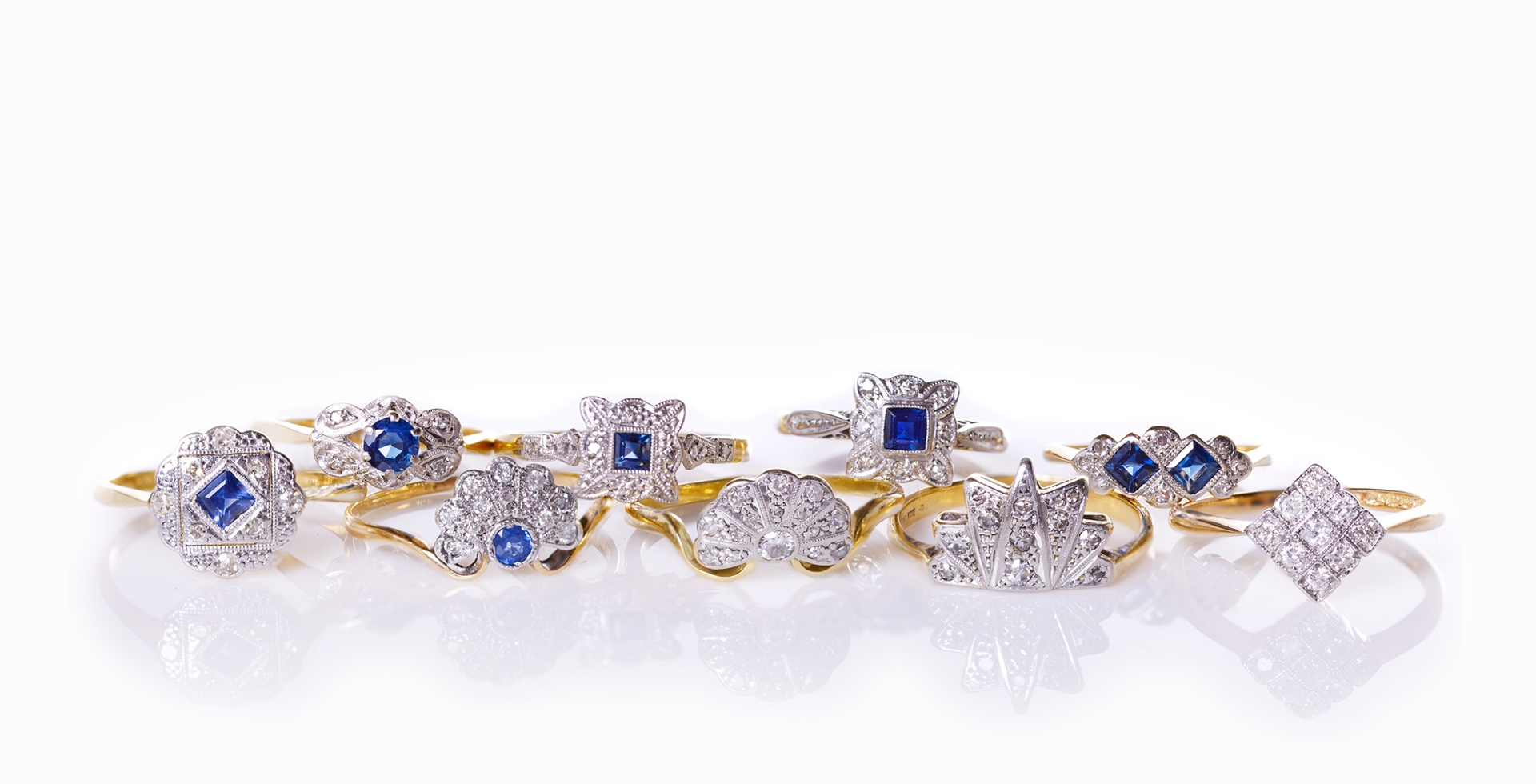Introduction: In the world of adornments, antique jewelry stands as a testament to the craftsmanship, history, and everlasting elegance that transcends generations. Each piece of antique jewelry whispers tales of bygone eras, carrying within it the essence of the cultures and lifestyles of yesteryears. From the intricate designs of the Victorian era to the bold statements of Art Deco, antique jewelry is a treasure trove of beauty waiting to be explored.

A Journey Through Time: Antique jewellery spans centuries, each era leaving its unique imprint on design and aesthetics. The Georgian era (1714-1837) heralded jewelry characterized by intricate metalwork and exquisite gemstones, often reflecting the opulence of the aristocracy. With the advent of the Victorian era (1837-1901), sentimentality took center stage, giving rise to pieces adorned with symbolic motifs and sentimental gemstones, such as mourning jewelry crafted to commemorate lost loved ones.
The Art Nouveau movement (late 19th to early 20th century) brought forth a departure from the rigidity of previous styles, embracing flowing lines and organic forms inspired by nature. Art Nouveau jewelry is renowned for its use of materials like enamel, horn, and glass, as well as its incorporation of motifs such as flowers, dragonflies, and nymphs.
The Jazz Age ushered in the Art Deco period (1920s-1930s), characterized by geometric shapes, bold colors, and a sleek, streamlined aesthetic. Art Deco jewelry exudes the glamour and sophistication of the Roaring Twenties, with designs often featuring symmetrical patterns, vibrant gemstones, and the innovative use of materials like platinum and lacquer.
Craftsmanship Beyond Compare: What sets antique jewelry apart is the unparalleled craftsmanship that went into its creation. Long before the age of mass production, skilled artisans meticulously crafted each piece by hand, employing techniques passed down through generations. From delicate filigree work to intricate stone settings, antique jewelry is a testament to the artistry and dedication of these master craftsmen.
Moreover, antique jewelry often incorporates materials and techniques that have become rare or obsolete, adding to its allure and value. Techniques such as repoussé, chasing, and granulation, as well as materials like seed pearls, hairwork, and foiled-back gemstones, lend antique pieces a sense of authenticity and charm that cannot be replicated.
Preserving a Legacy: As custodians of these exquisite treasures, preserving antique jewelry is not only a matter of maintaining its beauty but also safeguarding its historical and cultural significance. Proper care and storage are essential to prevent damage from environmental factors such as humidity, sunlight, and temperature fluctuations.
Regular cleaning and maintenance, using gentle methods and non-abrasive materials, help to keep antique jewelry in pristine condition without compromising its integrity. Consulting with experts in antique jewelry restoration and conservation can provide valuable insights into the best practices for preserving these precious heirlooms for future generations to cherish and enjoy.
Conclusion: Antique jewelry is more than just a collection of precious metals and gemstones; it is a window into the past, a reflection of the artistry and ingenuity of centuries gone by. Each piece tells a story, weaving together elements of history, culture, and craftsmanship in a tapestry of beauty and elegance. As we continue to marvel at the timeless allure of antique jewelry, let us also embrace our role as stewards of its legacy, ensuring that these treasures endure for generations to come.